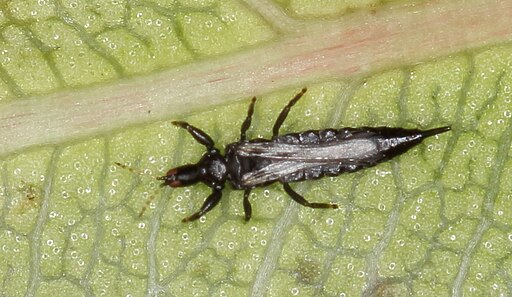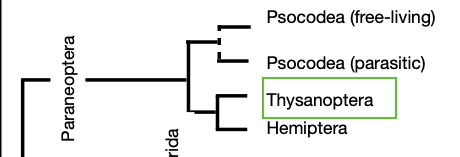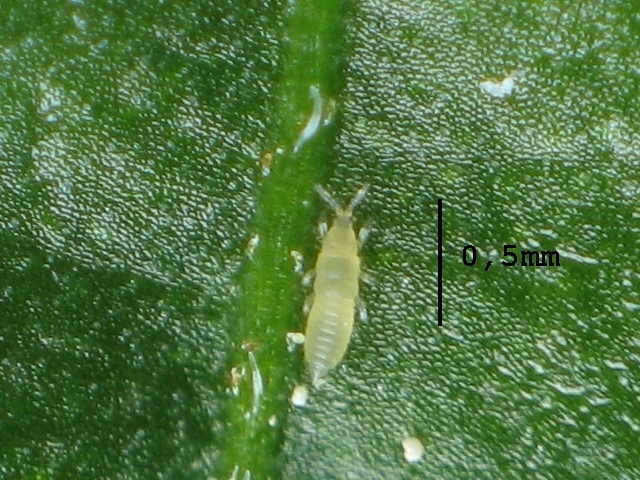29 Orders of Insects: Thysanoptera


Order Thysanoptera (Thrips)
Thysanoptera
- common name: thrips. Singular is thrips as well: “one thrips among many thrips”
- Greek: thysanos=fringe, ptera=wing
- diversity: about 6000 spp. worldwide; about 900 in Australia
- can be serious pests of crops
- most species phytophagous but some predators, a few omnivores
- some feed on mosses, ferns fungi, pollen, flower or leaf tissue
- gall formers: the gall provides insect shelter from weather and enemies
Two suborders:
Terebrantia – wings parallel at rest; saw-like ovipositor
Tubulifera – wings overlap at rest, ovipositor eversible, cylindrical
Characteristics of Thysanoptera
Adults
- Small (0.5-15mm), slender, cylindrical body
- head elongate, hypognathous; mouthparts modified to form a feeding tube with three stylets: the maxillary laciniae plus the left mandible
- short antennae; compound eyes small to large, ocelli present in winged species
- With or without wings; if present, wings subequal, strap-like, with long setal fringe around the edge
- legs short, gressorial; pretarsus has a protrusible, adhesive arolium (bladder) instead of a tarsal claw
Immatures
- Immature stages (nymphs) resemble small adults

More about thrips from the Australian Museum and the CSIRO: Thrips (CSIRO)
Need to identify thrips? See Thrips of Australia.
Topic review
Do you know?
- the main anatomical features of thrips

